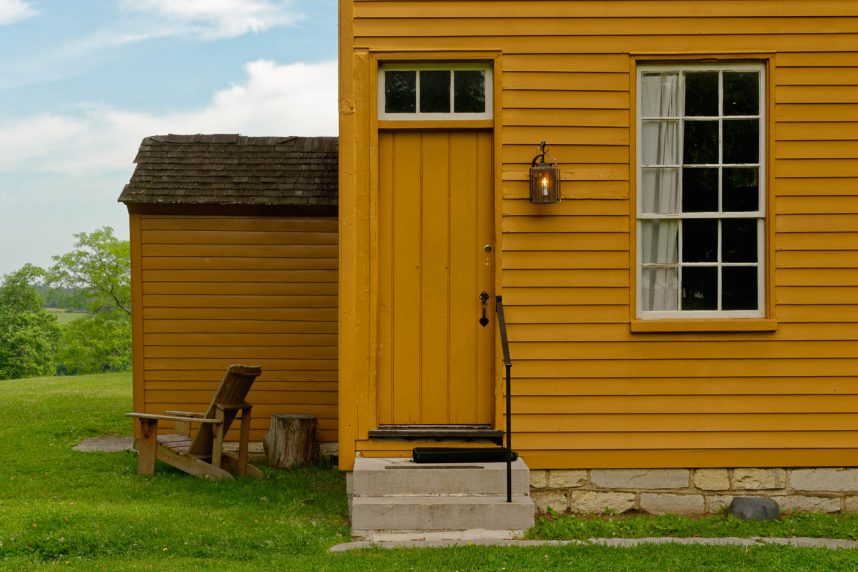
Discovering the Shaker Village of Pleasant Hill
Each year, as Jim and I head home from our vacation in the sunny state of Florida, we try to find new places to visit along the way – little side trips.
We believe the trip home should be fun and educational, not a drudgery. Besides, as photographers, we are always on the lookout for amazing places to shoot. You never know where that next great image will come from.
Once Jim and I have decided on a route home, I often turn to TripAdvisor and check out the Attractions and Things to Do section for each large city or town along the way. From there, I make a list of the most interesting places to visit and we make a decision. This year, we chose the Shaker Village of Pleasant Hill in the Bluegrass State of Kentucky.
After spending a night in Lexington, Kentucky, we headed out the next morning to Pleasant Hill which is just 25 miles (40 km) southwest of Lexington. It is quite a lovely drive from Lexington, to the Shaker village. At one point, you find yourself driving along a beautiful winding road as it runs alongside the Kentucky River.
I was looking forward to this visit because several years ago, I had read a very interesting piece in National Geographic about some of the last remaining Shakers in one of the other Shaker communities. Prior to the article, I knew very little about the Shakers and their way of life. I felt this trip would be an excellent opportunity to see first hand what used to be the third largest Shaker community in the United States between 1805 and 1910.
As we entered the Shaker property, Jim and I were very impressed with the size and condition of this National Historic Landmark. The grounds were well groomed and you felt like you had stepped back in time.
Our first stop was at the Trustees’ Office where we purchased our admission ticket and where we picked up a map and tour schedule. Everyday, between 10:00 am and 4:00 pm, you will find a staff-led tour of the Shaker village. (Daily adventures change seasonally and the schedule is subject to change.)
Your admission ticket will grant you full access to self-guided and staff-led tours, demonstrations, hands-on activities and more throughout The Historic Centre, The Farm and the Preserve.
There is so much to see at this National Historic Site that you should plan to spend the day if you can.
Jim and I followed the first staff-led tour in front of the Trustees’ Office and then went off on our own. We wanted to make sure that we could get several photographs of the village before we left at the end of the day. It was important to take advantage of the good light so we made that our first priority.
Below, you will find several images I took during our visit; as well as, a little information about each of the buildings. Photography is permitted at Pleasant Hill but tripods are not allowed inside the buildings.
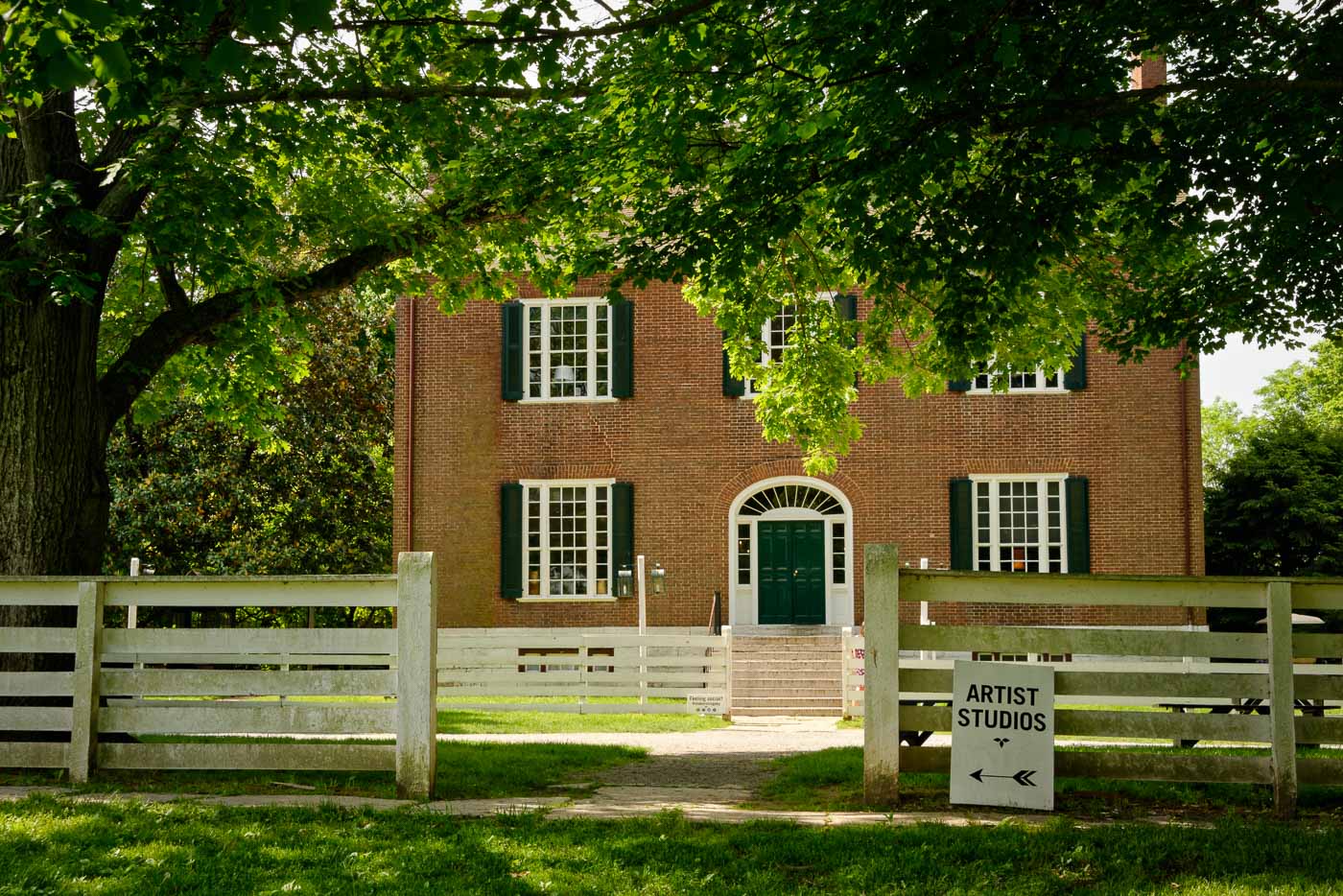
The Trustees’ Office 1839
“The Trustees were the legal and financial leaders of the community, and this building served as their office. It also provided overnight lodging to visiting Shakers and people from the ‘world.’ Here, Micajah Burnett’s magnificent twin spiral staircases rise three floors.”
Today in this building, you will find lodging, a Gift Shop, and the Trustee’s Table where you can enjoy traditional favorites and seasonal Kentucky dishes from the Pleasant Hill gardens and local farmers. Jim and I had lunch in the restaurant and we were very impressed. The food was delicious and we had our very first lemon pie. We have had many lemon meringue pies before but never a lemon pie with a top crust. The Shakers at Pleasant Hill were very fond of lemons.
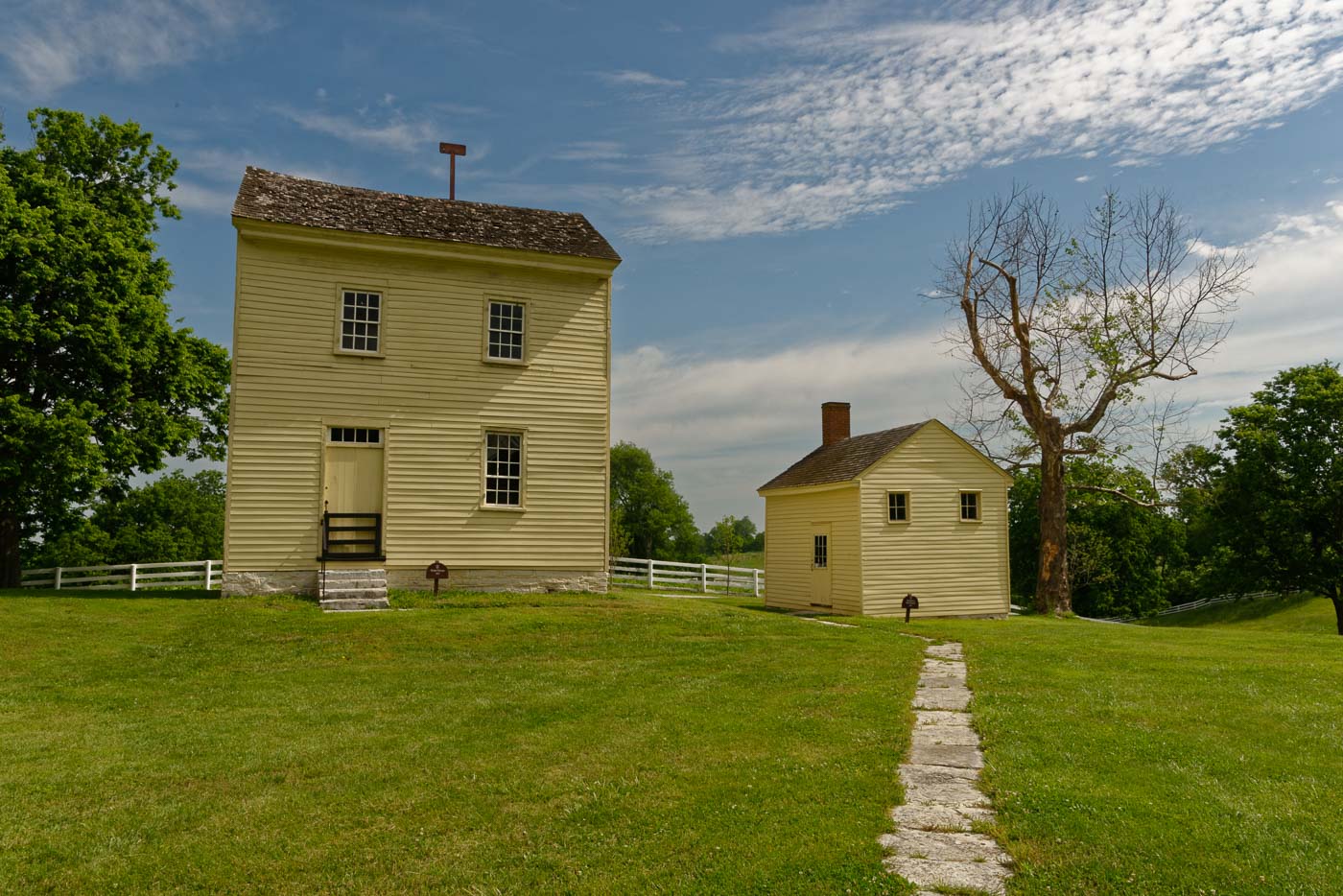
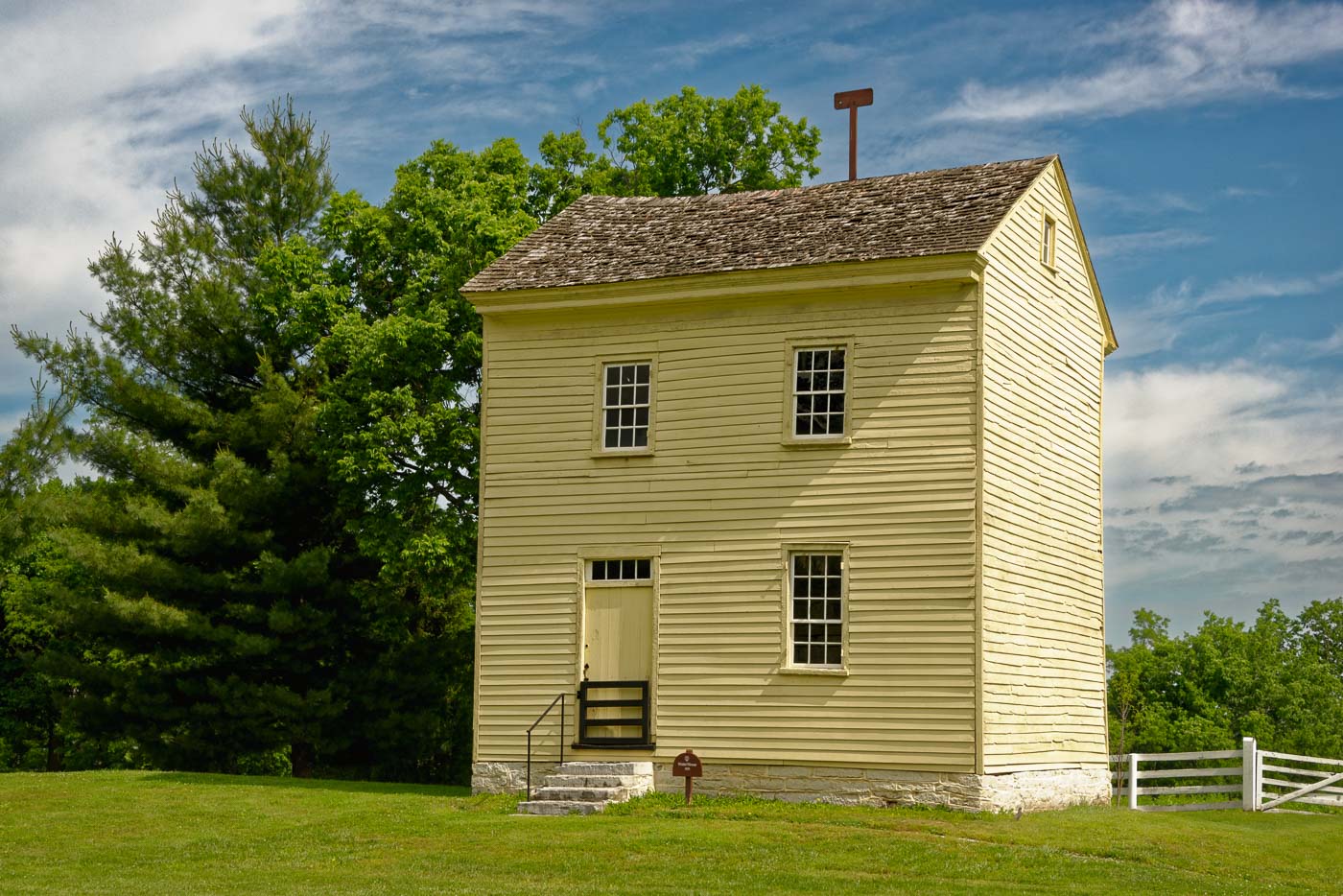
Water House 1833
The Water House is the tallest of the two buildings in the above images. The smaller building is the Brethren’s Bath House.
“Pleasant Hill was the first western Shaker village to have a public water system. Water was pumped by horse-power from a spring at the Tanyard to the 19,000-gallon staved reservoir on the second floor of the water house. The water then was gravity-fed to the kitchens and wash houses in the Village.”
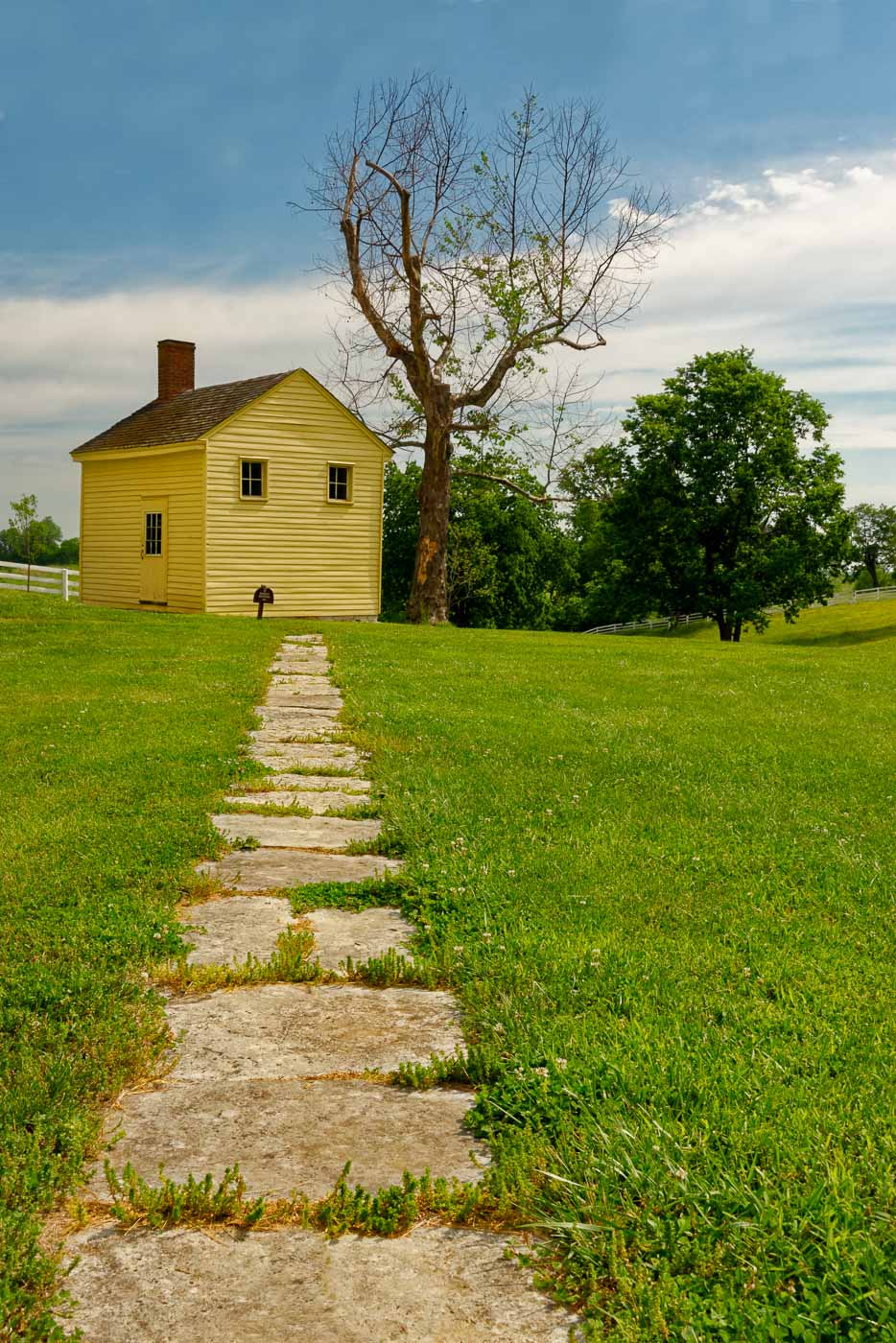
The Brethren’s Bath House 1860
“The only remaining example of many bath houses constructed for each gender.”
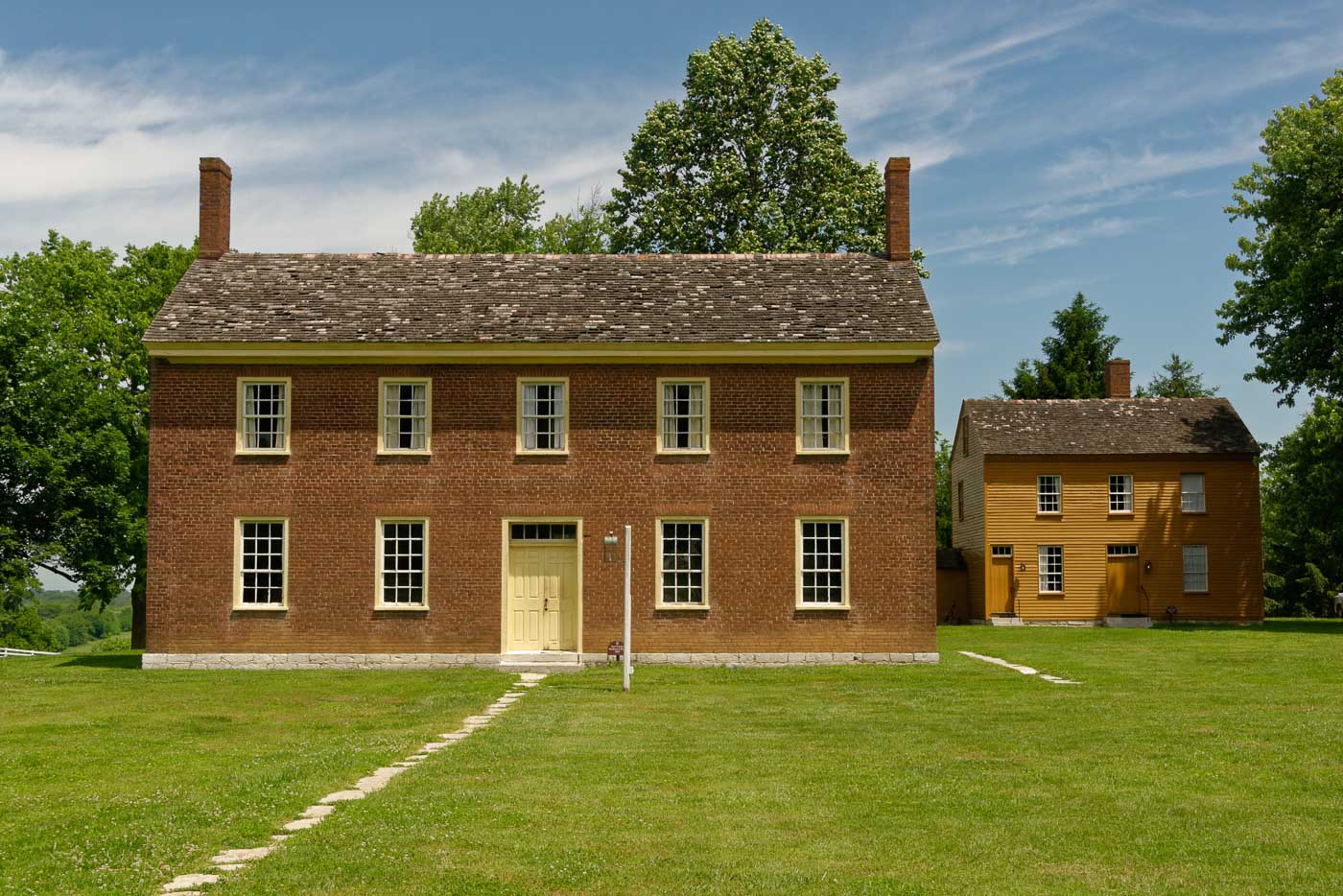
East Family Brethren’s Shop 1845
“Used by the East Family brothers as a woodworking shop, here they made furniture and other wooden objects, such as pegs, that were needed throughout the Village.”
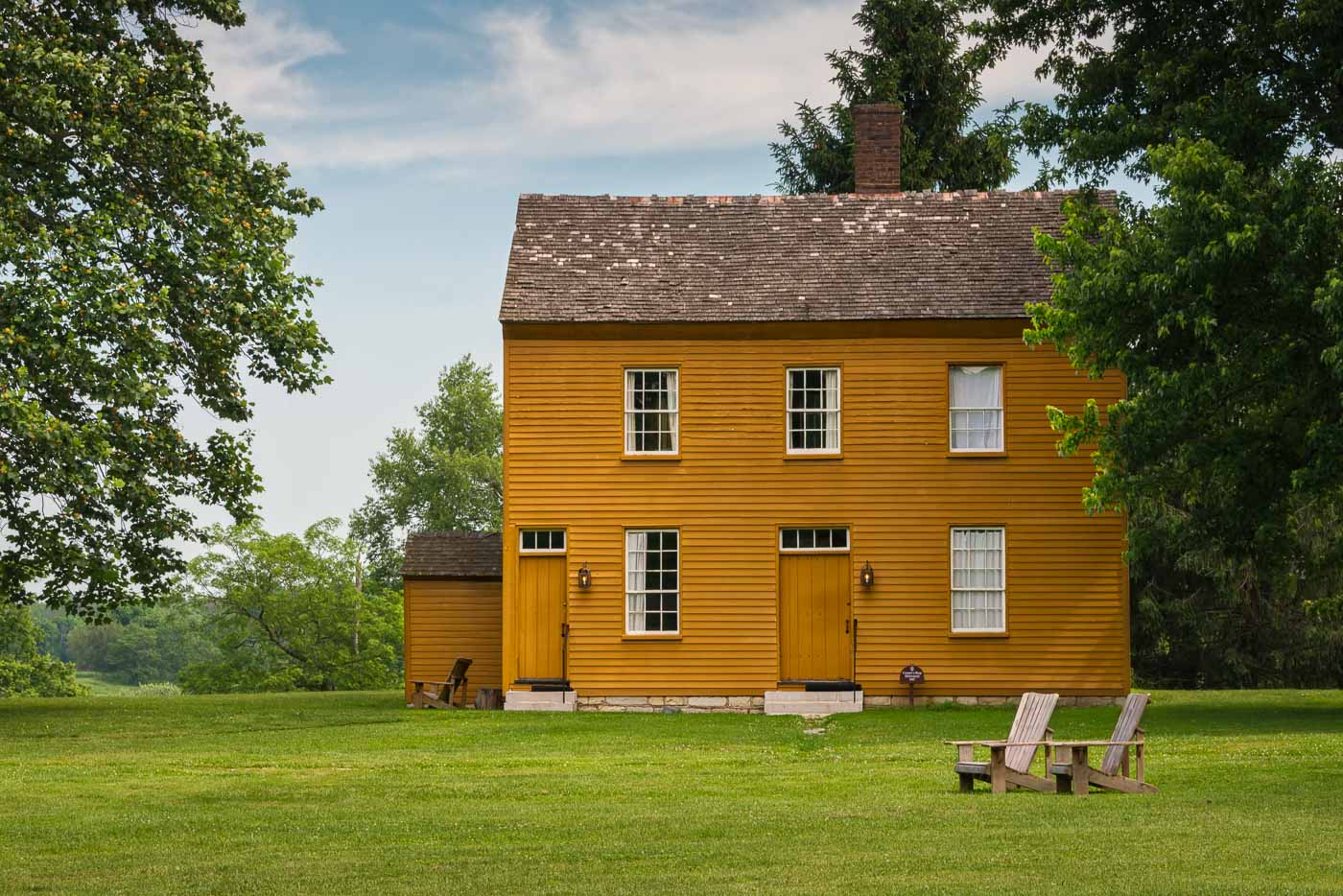
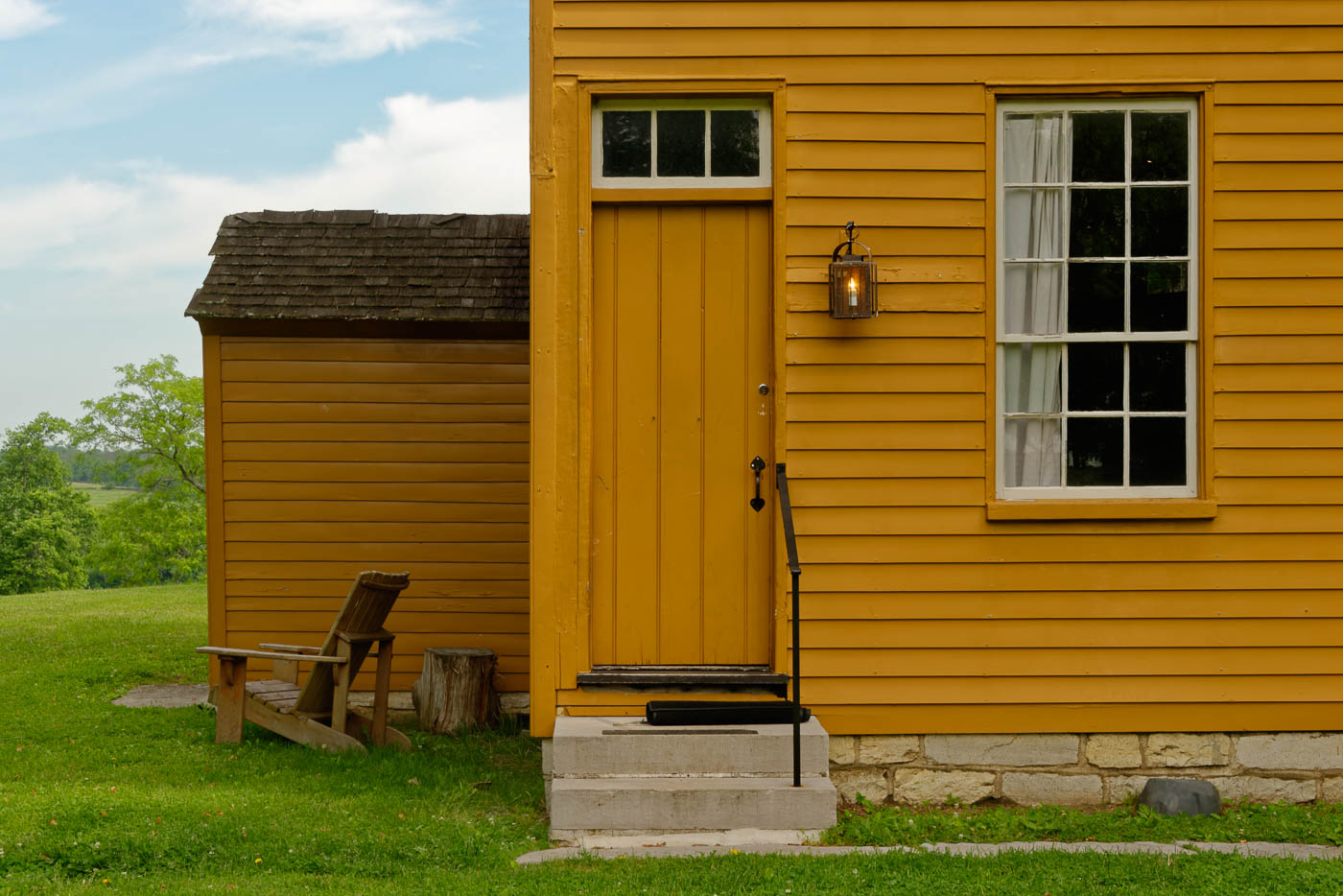
Cooper’s Shop 1847
“Moved to its present location and remodeled in 1847, here the Shaker craftsmen made as many as 2,000 coopered articles, such as fine cedar pails, buckets and churns, each year.”

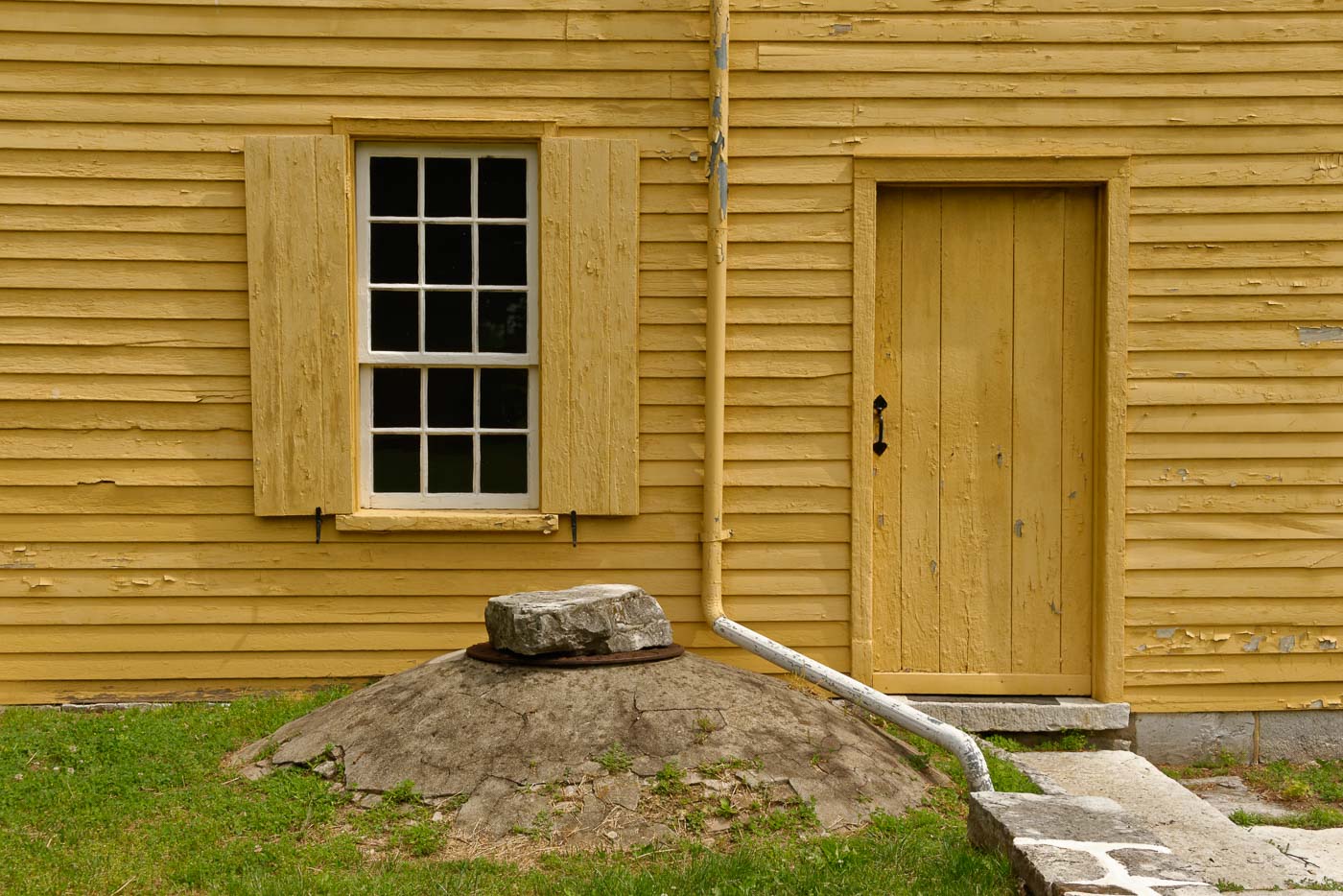
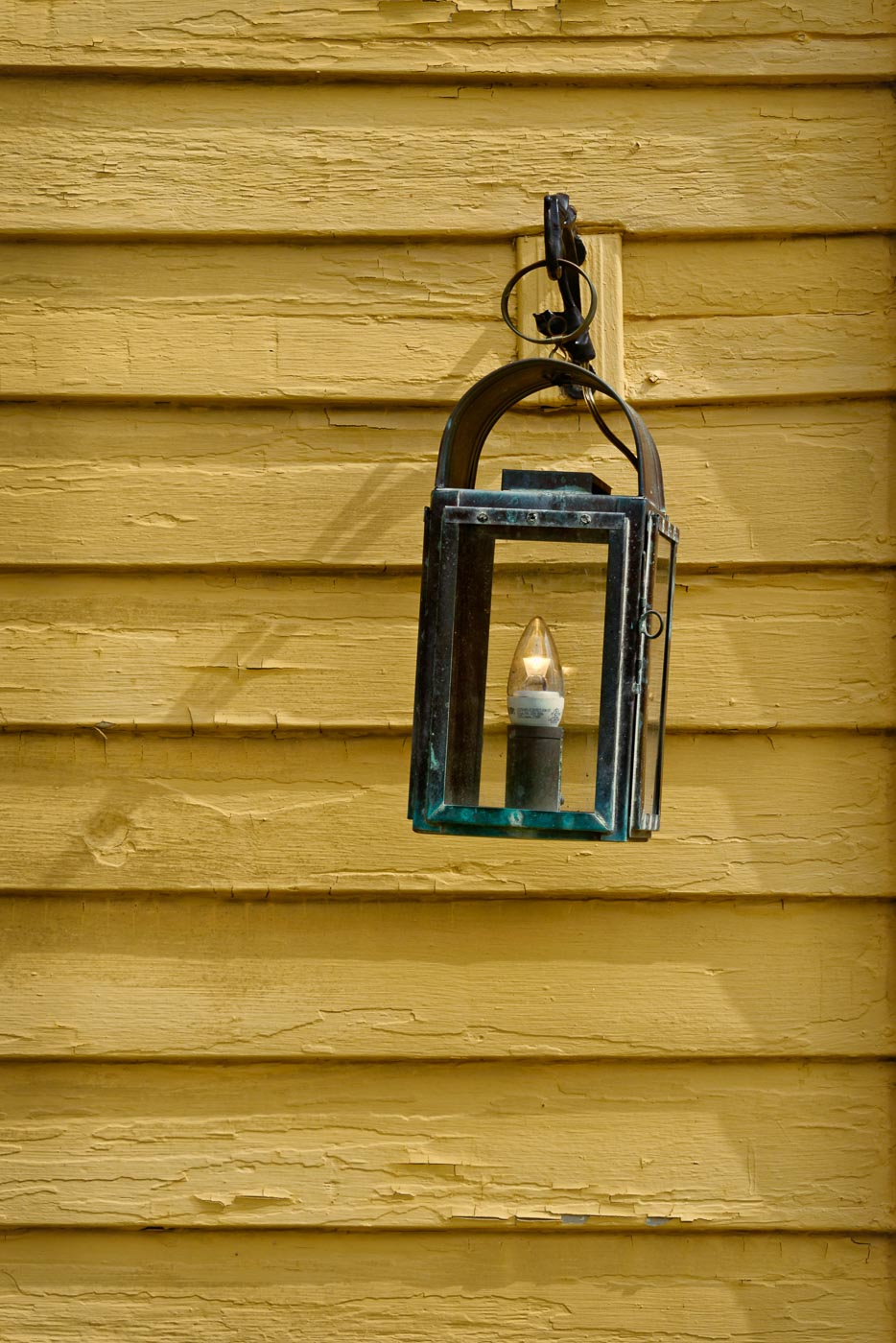
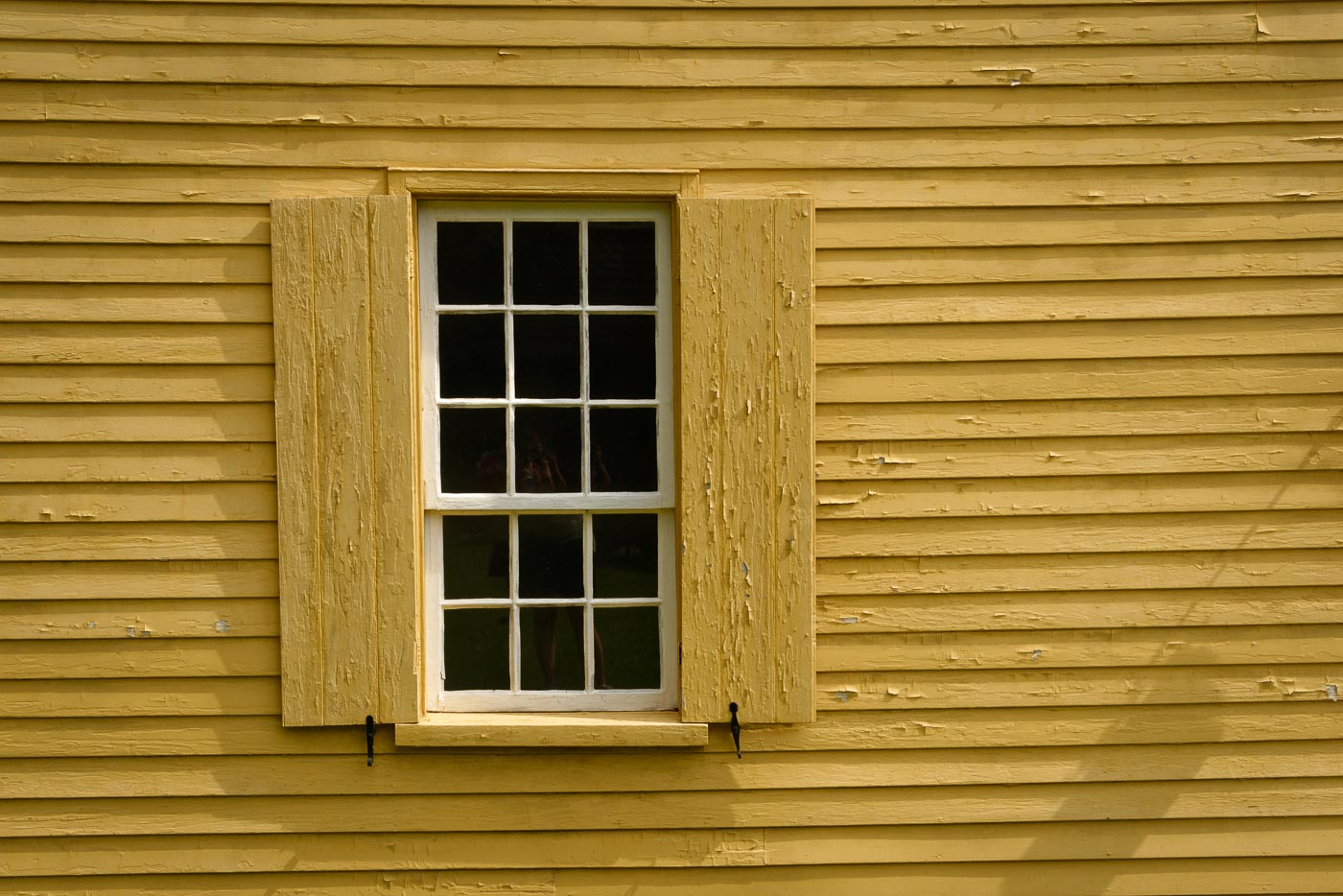
East Family Wash House 1825
“Used by the East Family sisters to wash, dry and press the family’s clothes, here they used horse-power to agitate their washing tubs to assist in the washing process. It also was noted by a visitor that they ironed with weights and rollers ‘without the application of heat.’ The east wing was added in 1849.”
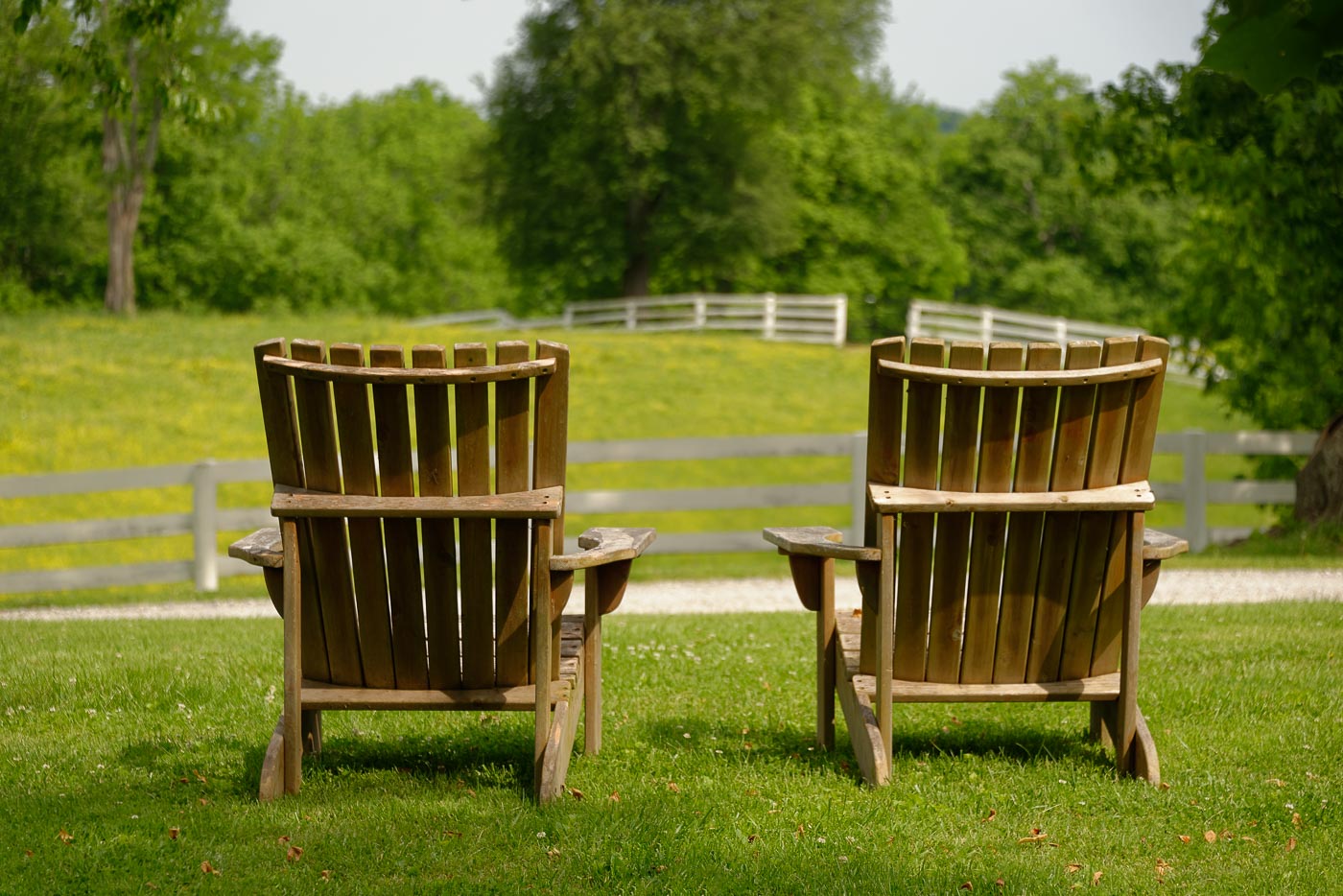
This is a nice location to sit and rest for a while.
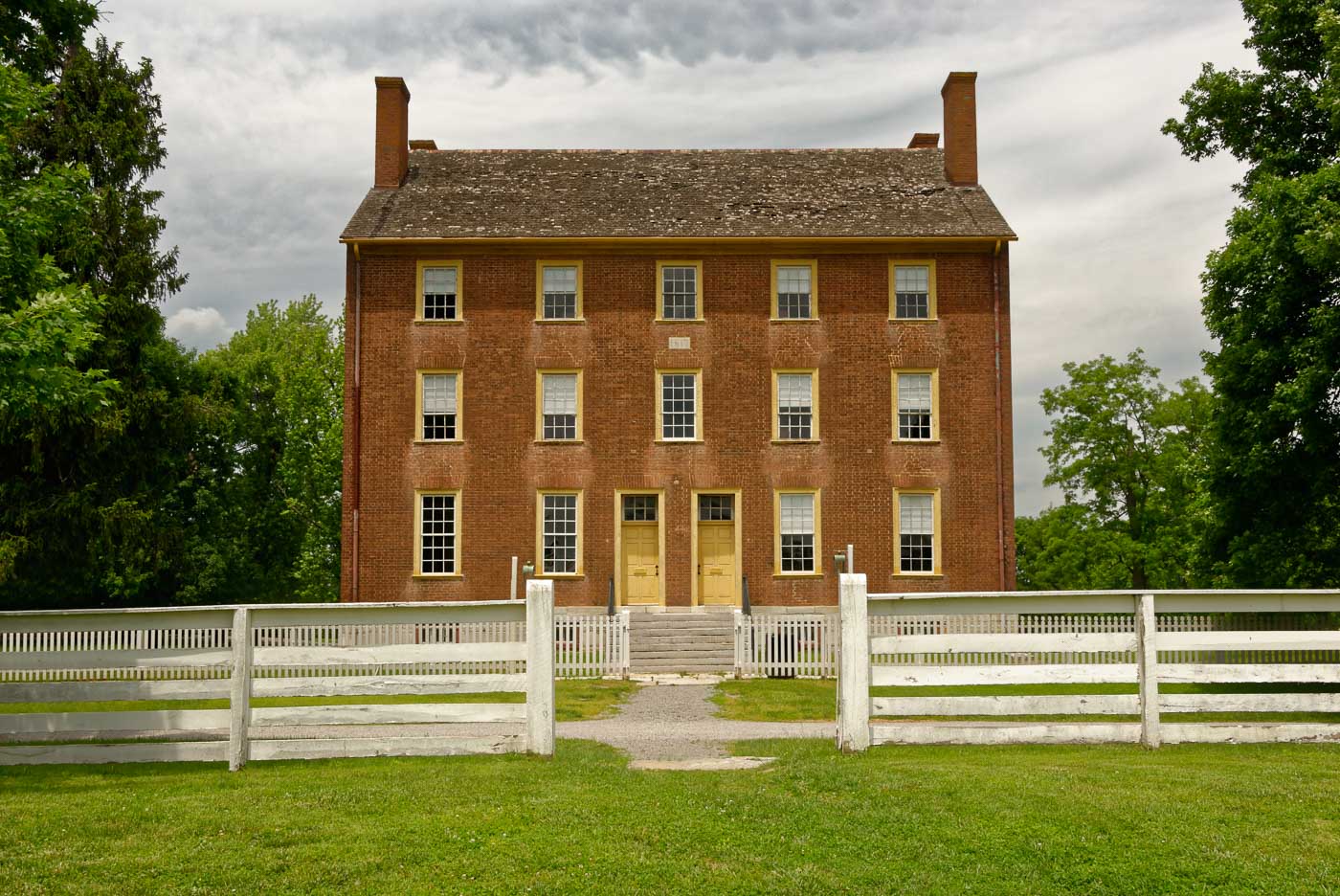
East Family Dwelling 1817
“The society was divided into five communal families, numbering from 50 to 100 members. Every family had its own dwelling house, shops, barns, gardens and orchards.”
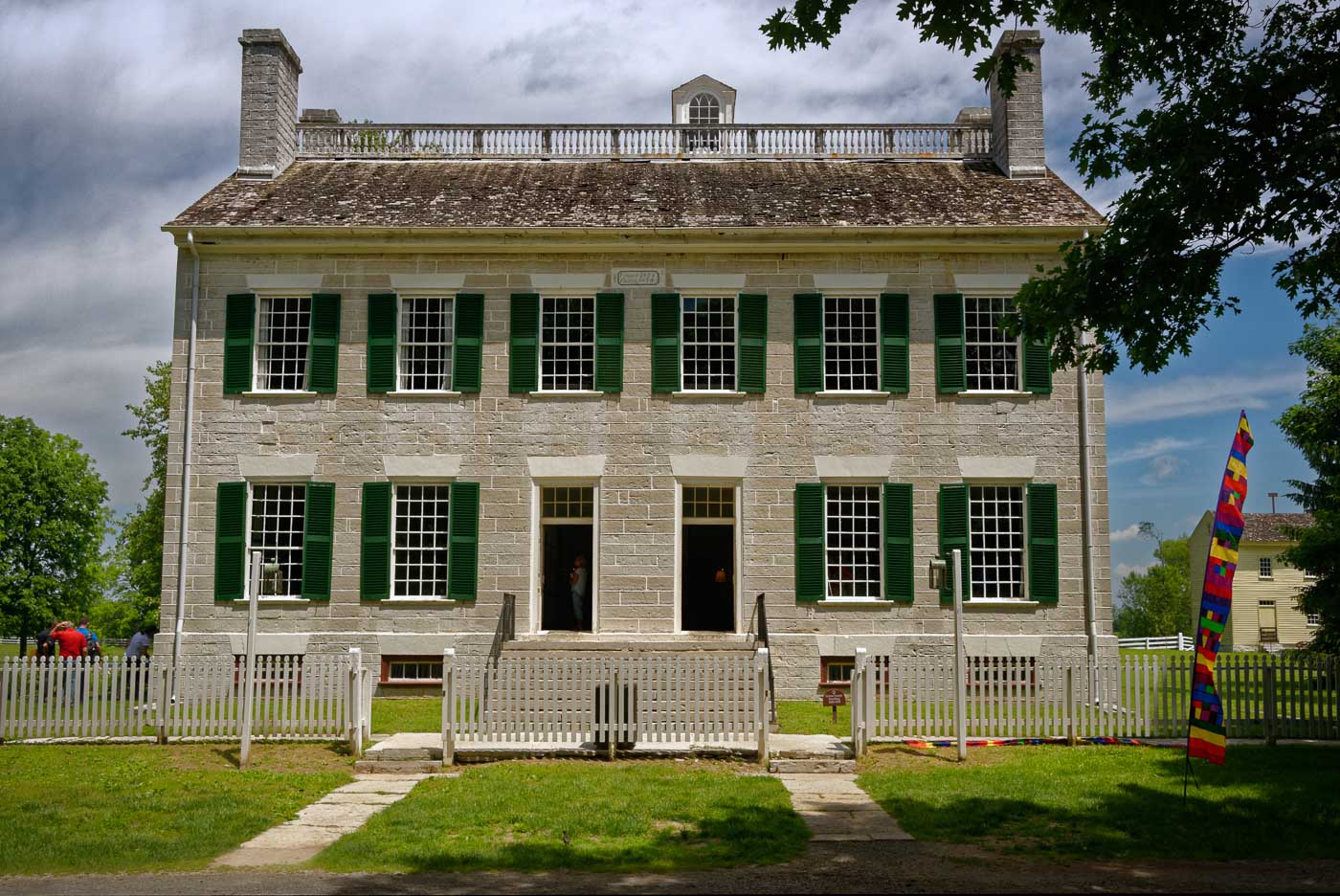
Centre Family Dwelling 1824-1834
“The main dwelling buildings were named by their location – these Shakers making up the Centre ‘family.’ Up to 100 members lived as brothers and sisters on opposite sides of this building, which contained 14 bedrooms, kitchens, a dining room, a cellar with food storage rooms, an infirmary and a large meeting room.”
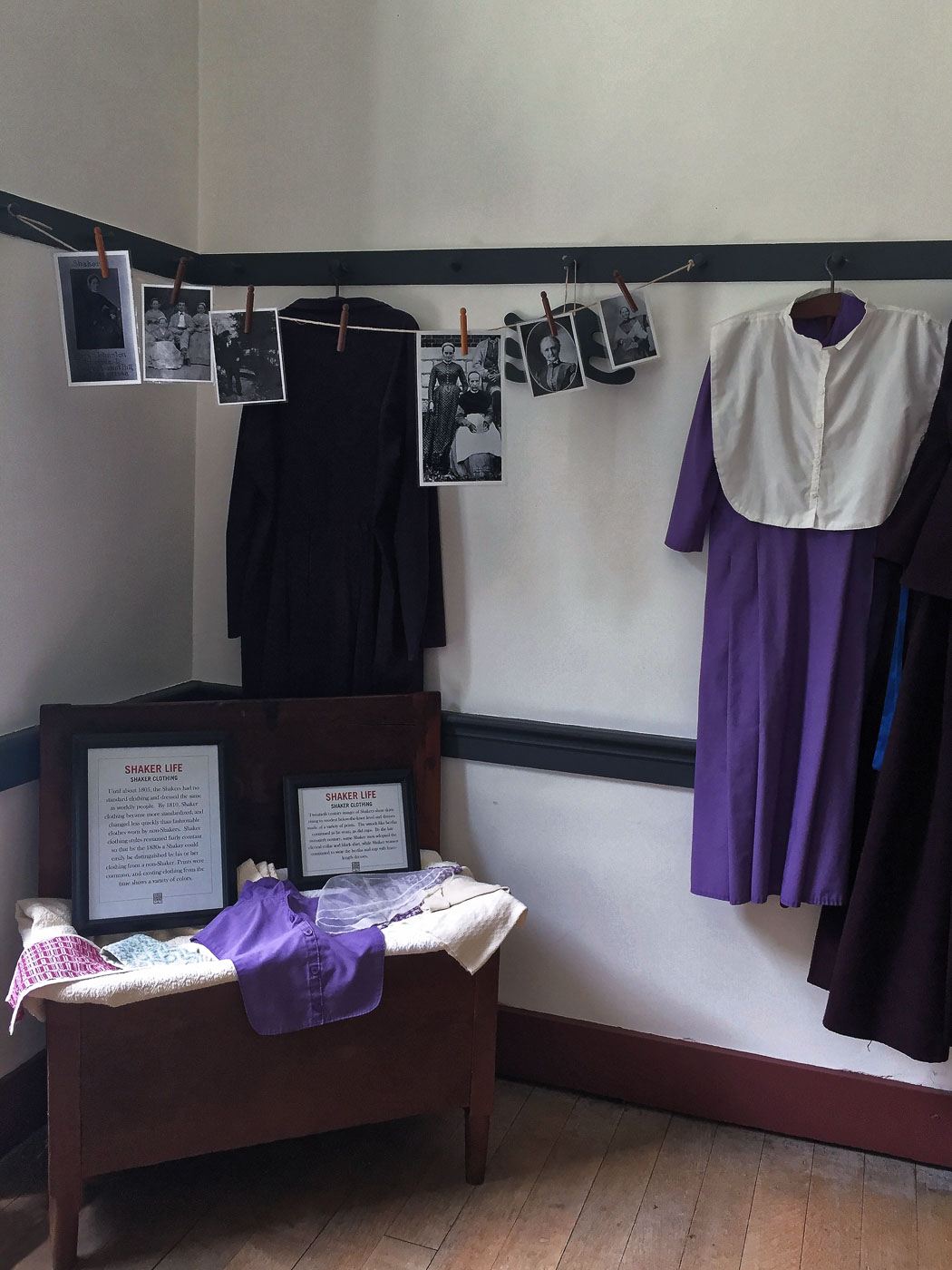
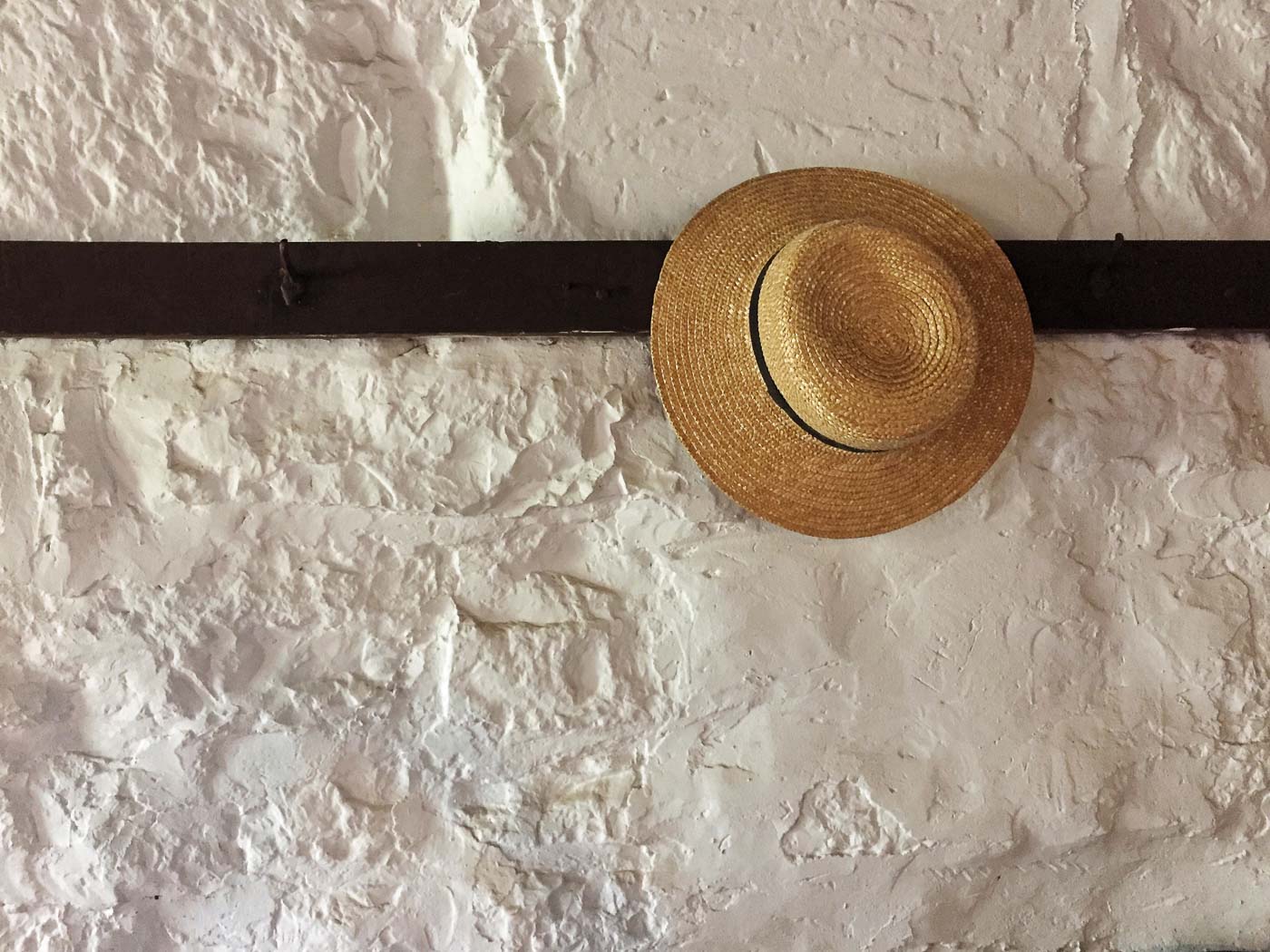
A sampling of Shaker clothing which can be found in the Centre Family Dwelling.

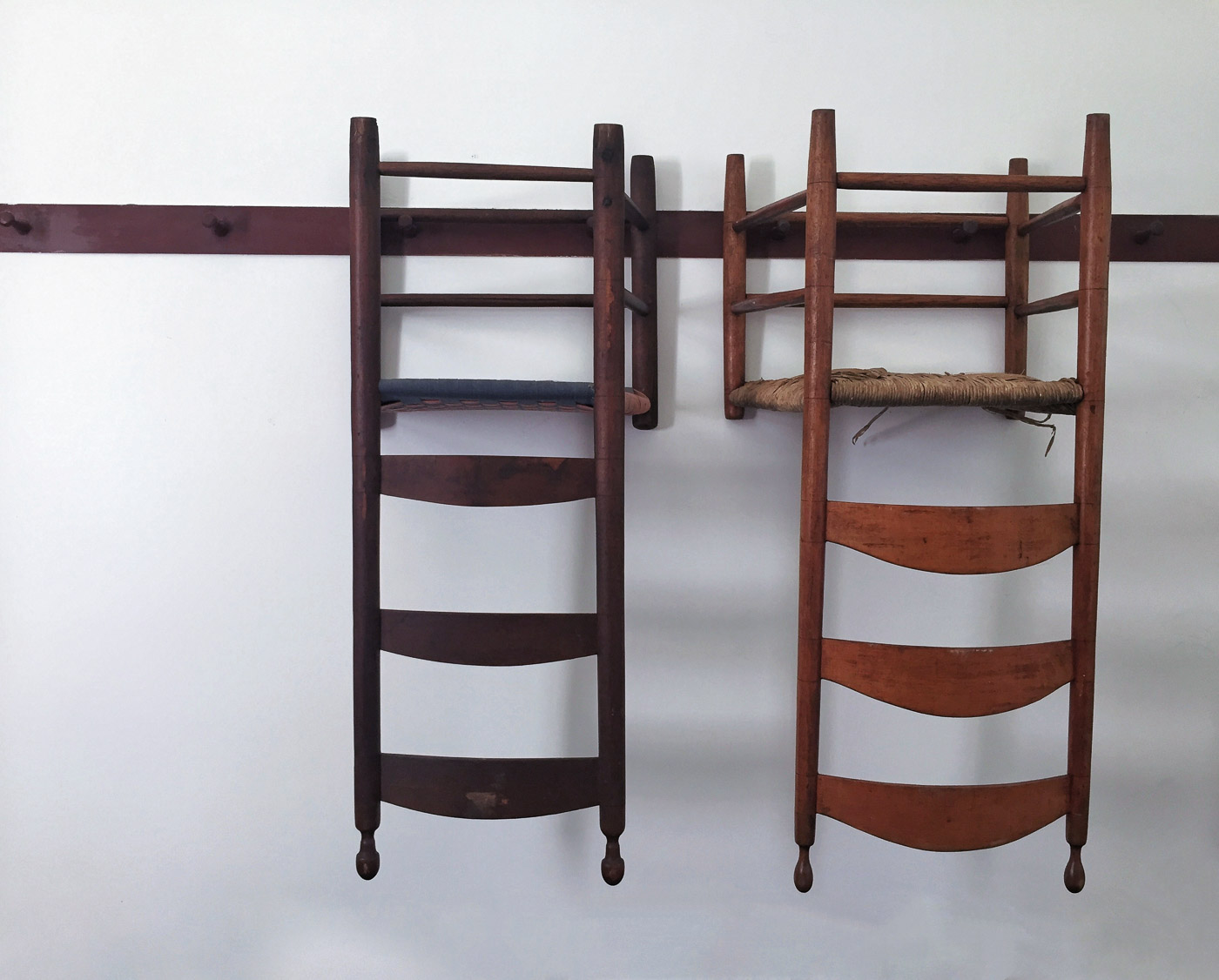
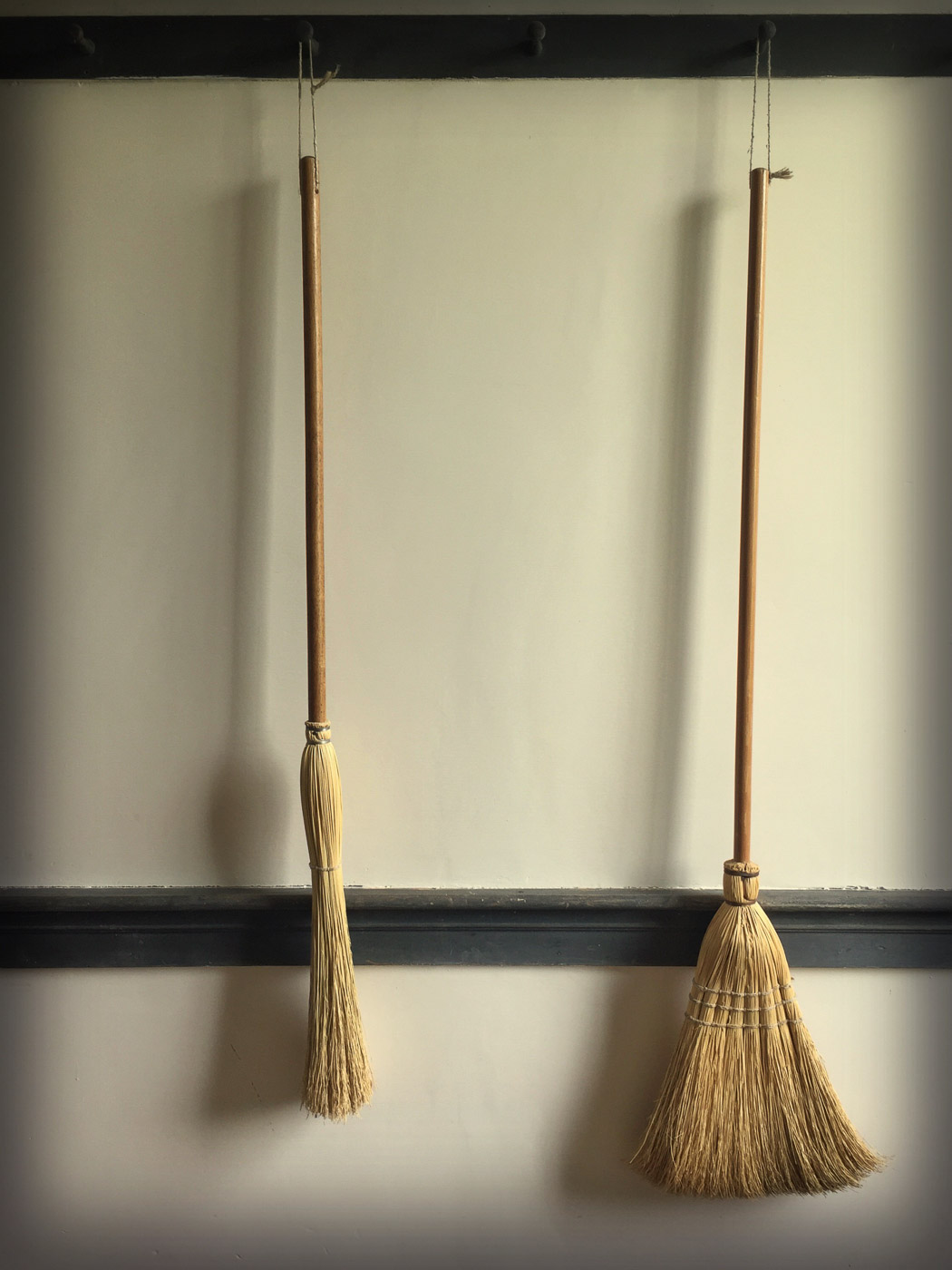
The Shakers used peg rail to hang up clothes, hats, and very light furniture pieces such as chairs when not in use.
Shaker craftsmen were known for a style of Shaker furniture that was plain in style, durable, and functional. Their dedication to hard work and perfection earned them respect and admiration. Shakers believed that making something well was in itself, “an act of prayer”.
Shaker ladder back chairs were usually mass-produced because a great number of them were needed to seat all the Shakers in a community.
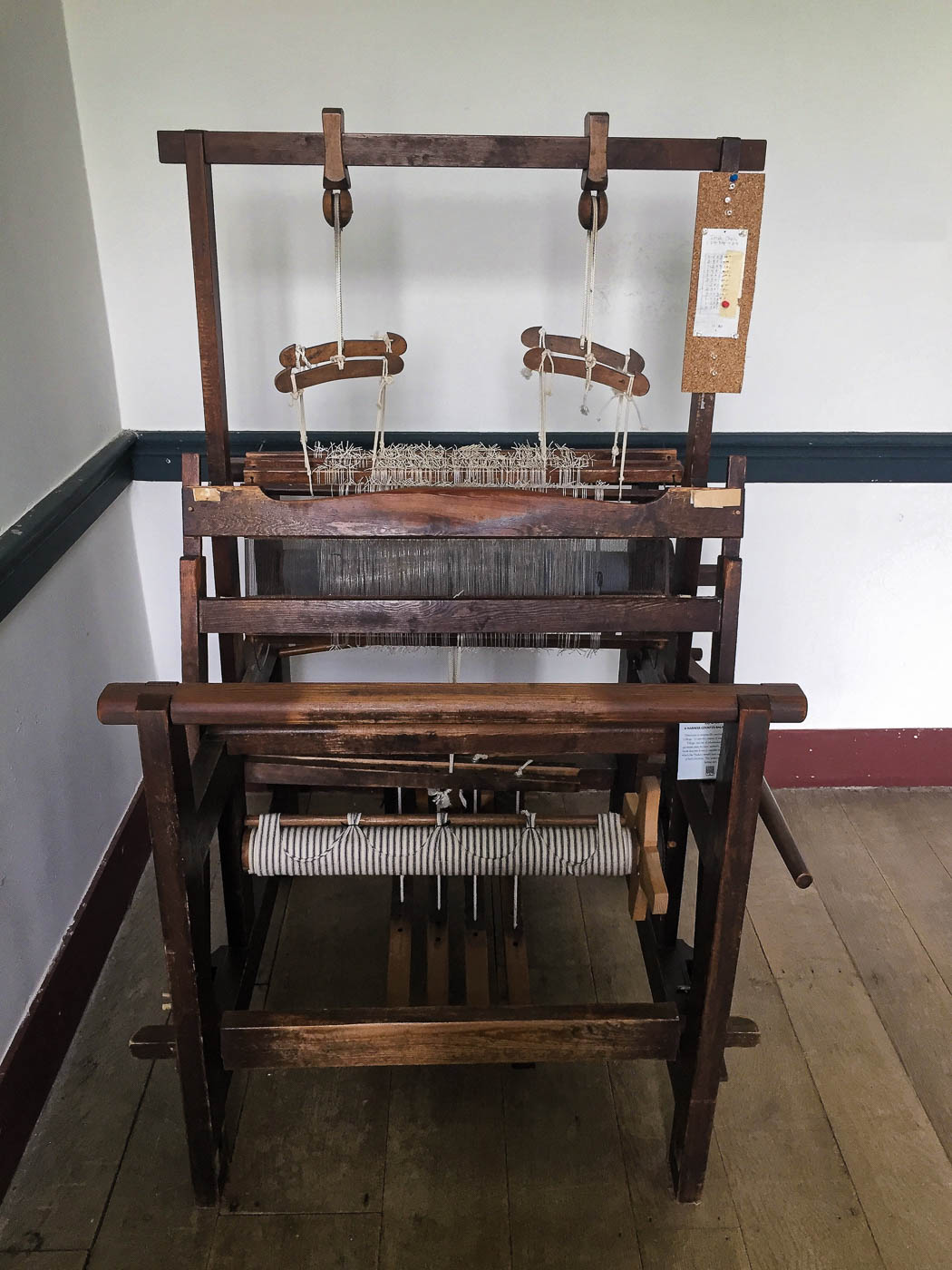
“The Pleasant Hill Sisters made a variety of textiles for their community’s use. They used natural fibres, such as wool, flax and silk. They also used cotton, which had to be purchased from farther south since it does not grow well in Central Kentucky.
Shaker Sisters were adept at spinning and weaving. They would sit at their wheels and looms for approximately eight hours a day, producing bed coverlets, bolts of fabric, shawls, rugs and more.
Shaker ideals of sustainability were very important. Scraps of fabric from worn clothing were re-purposed into rag rugs and quilts.”
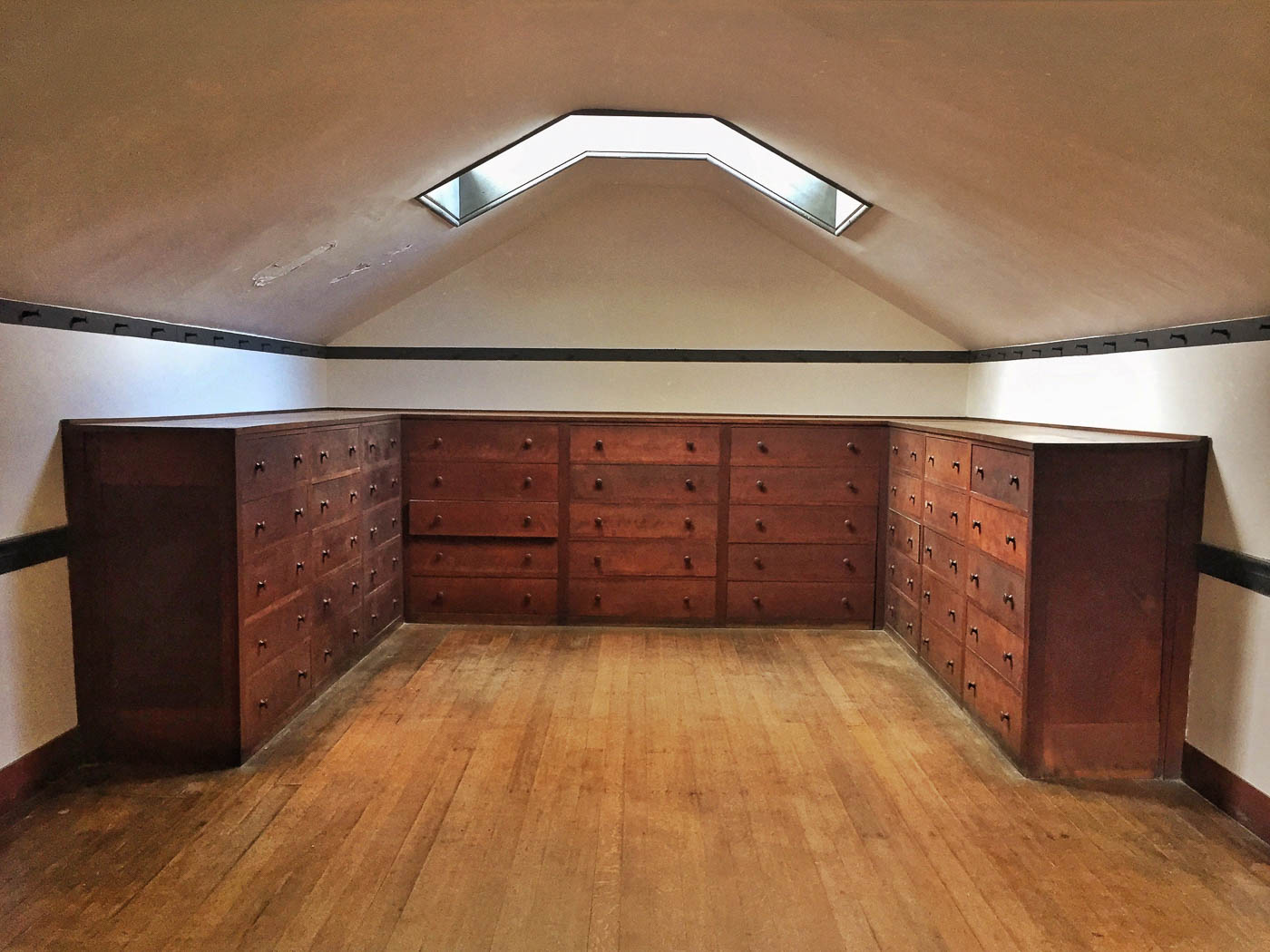
A wall of dresser draws in the upper level of the Centre Family Dwelling.
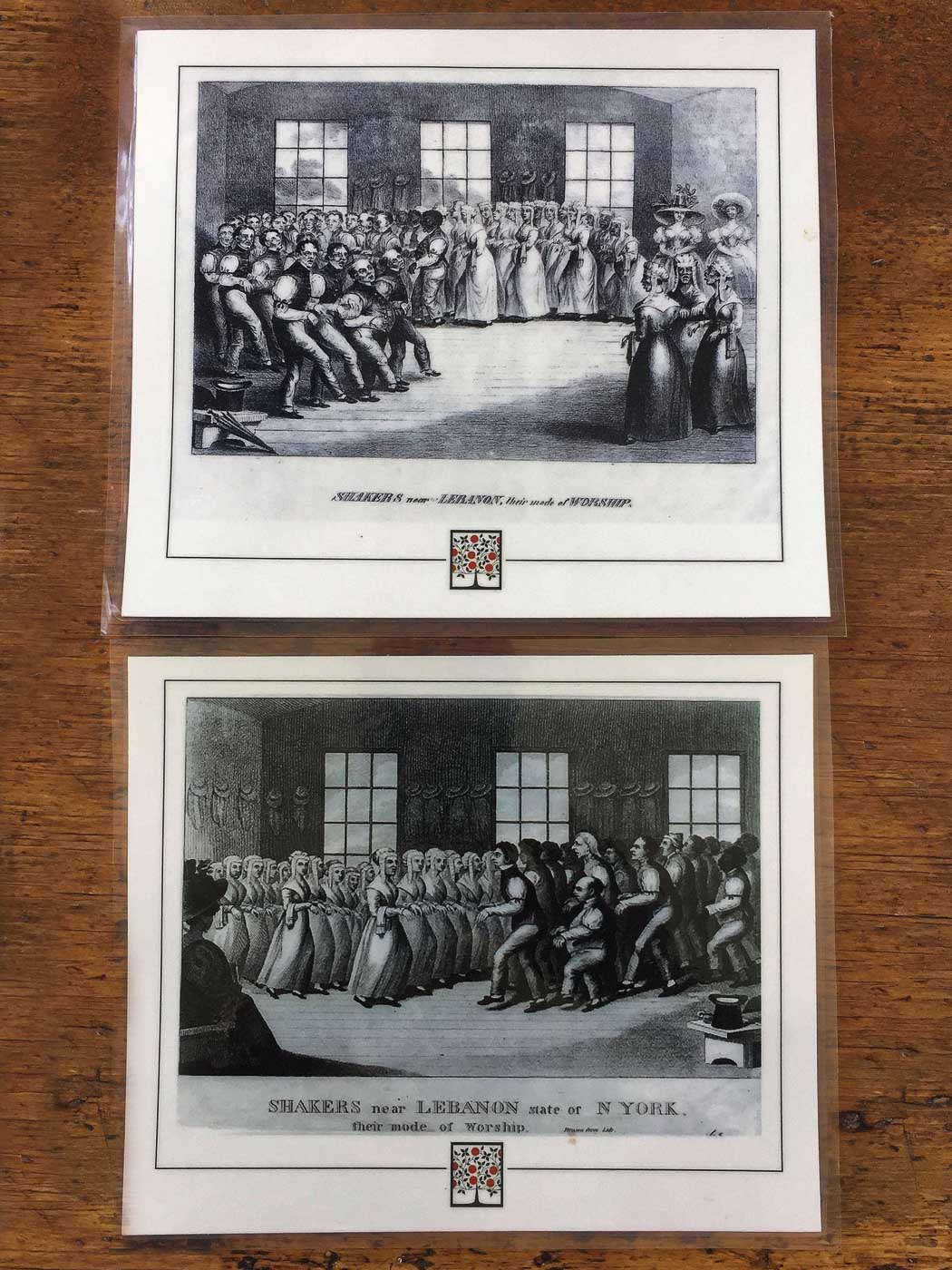
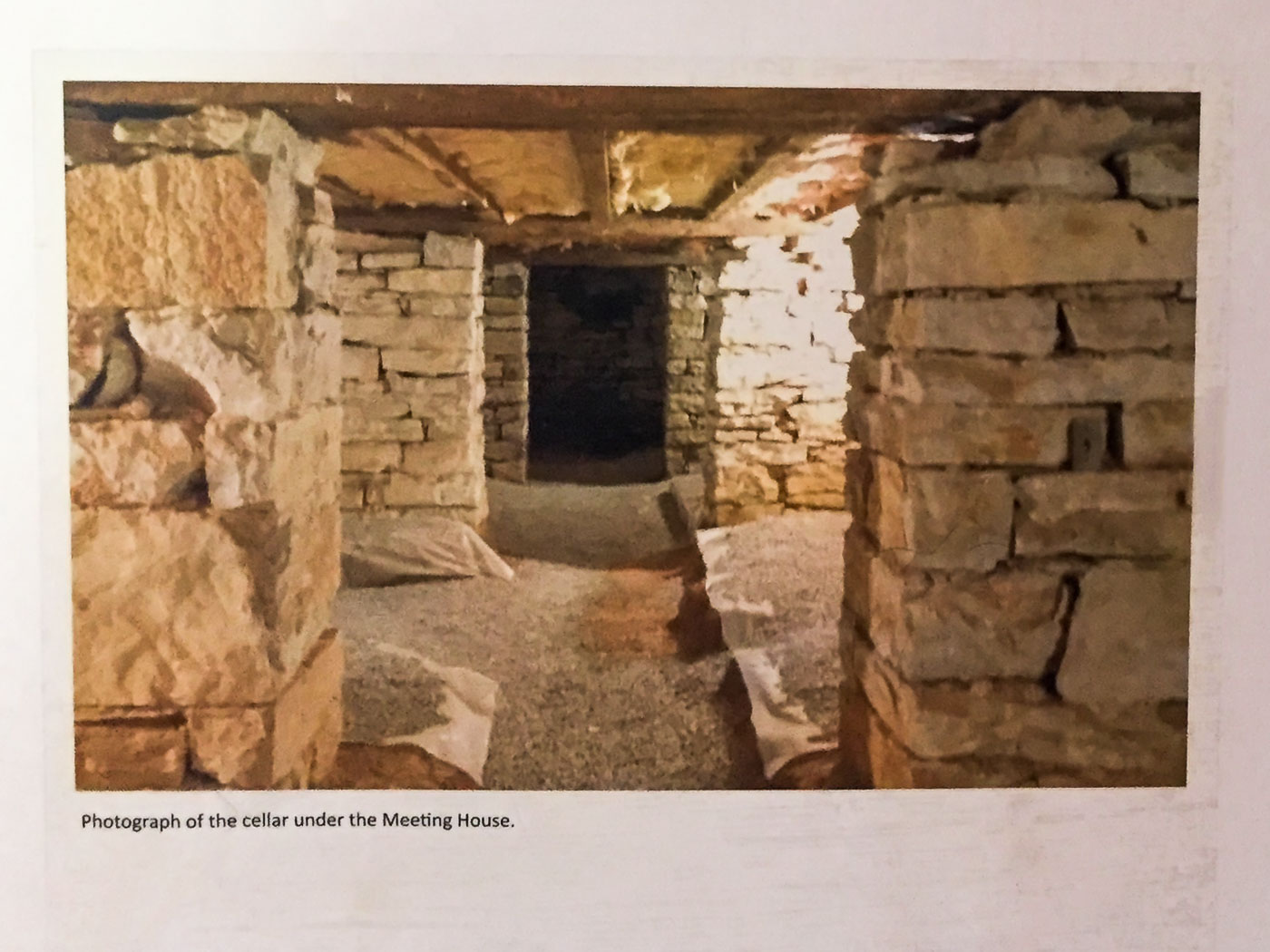
Meeting House 1820
“As the spiritual centre of the community, this building housed worship services, which included the shaking, whirling dances giving the Shakers their name. Apartments for the Ministry were on the second floor.
To withstand the stress and vibration of dozens of dancing Shakers, the first floor is reinforced below the building by two-feet thick stone walls every eight feet.”
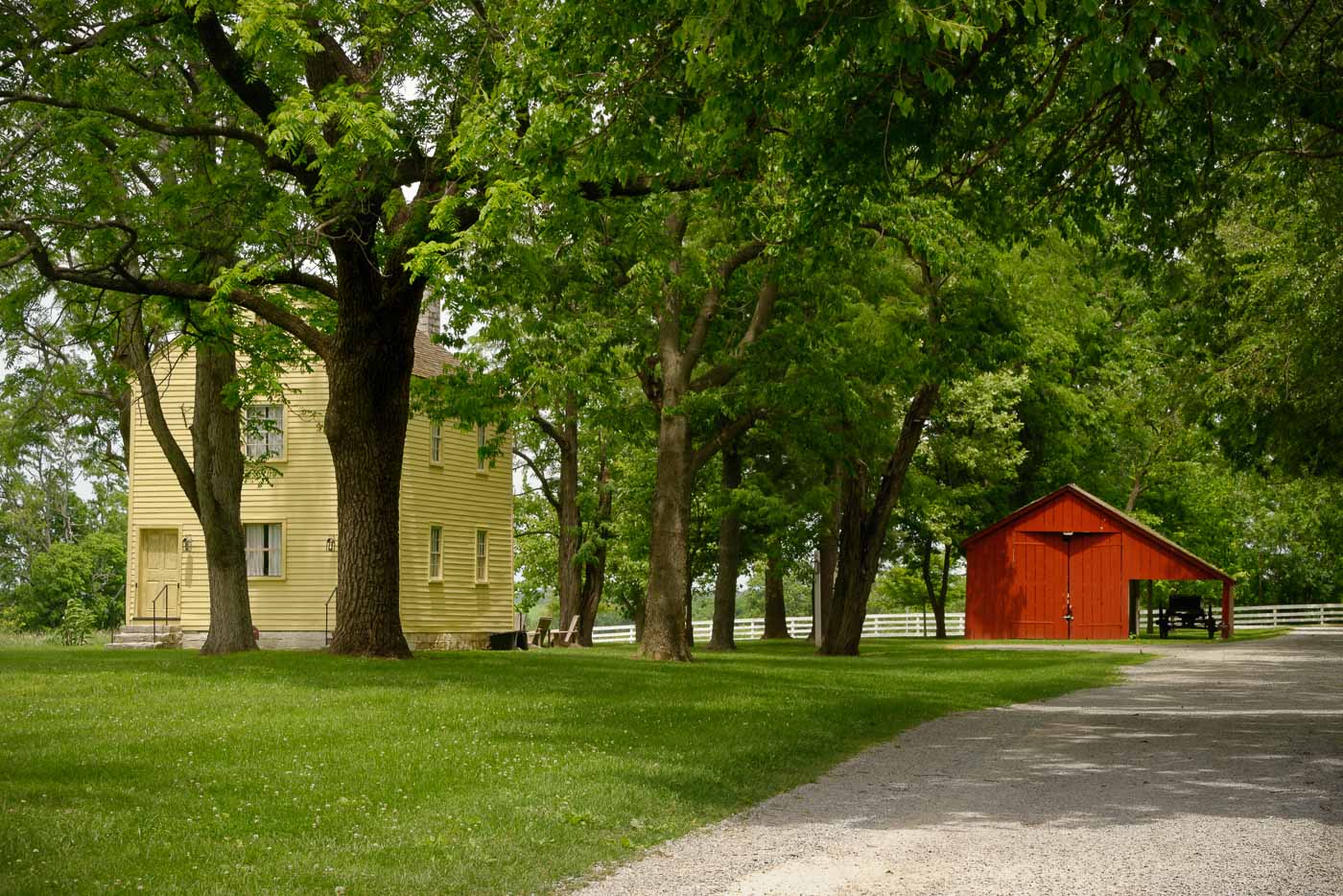
Old Ministry’s Shop 1813 (The yellow building)
“The original building where the Ministry did most of their work. It was built next to the original stone Meeting House (1810), but was turned into workshop space after the newer Meeting House and Ministry’s Workshop were built in the centre of the Village.”
Scale House 1875 (The red building)
“The scales, set in a stone pit foundation, were used for weighing livestock in the pen or for wagons loaded with goods for market. Worldly people, mostly local farmers, paid the Shakers to use their scales and mills as well. The Shakers were quite reputable in all facets of trade. There is an attached wagon shed on the east side of the scale house.”
Other buildings at Pleasant Hill
“During a 105-year span, the Pleasant Hill Shakers constructed more than 260 structures on the property. Today, there are 34 surviving buildings, most located along the mile-long gravel turnpike.”
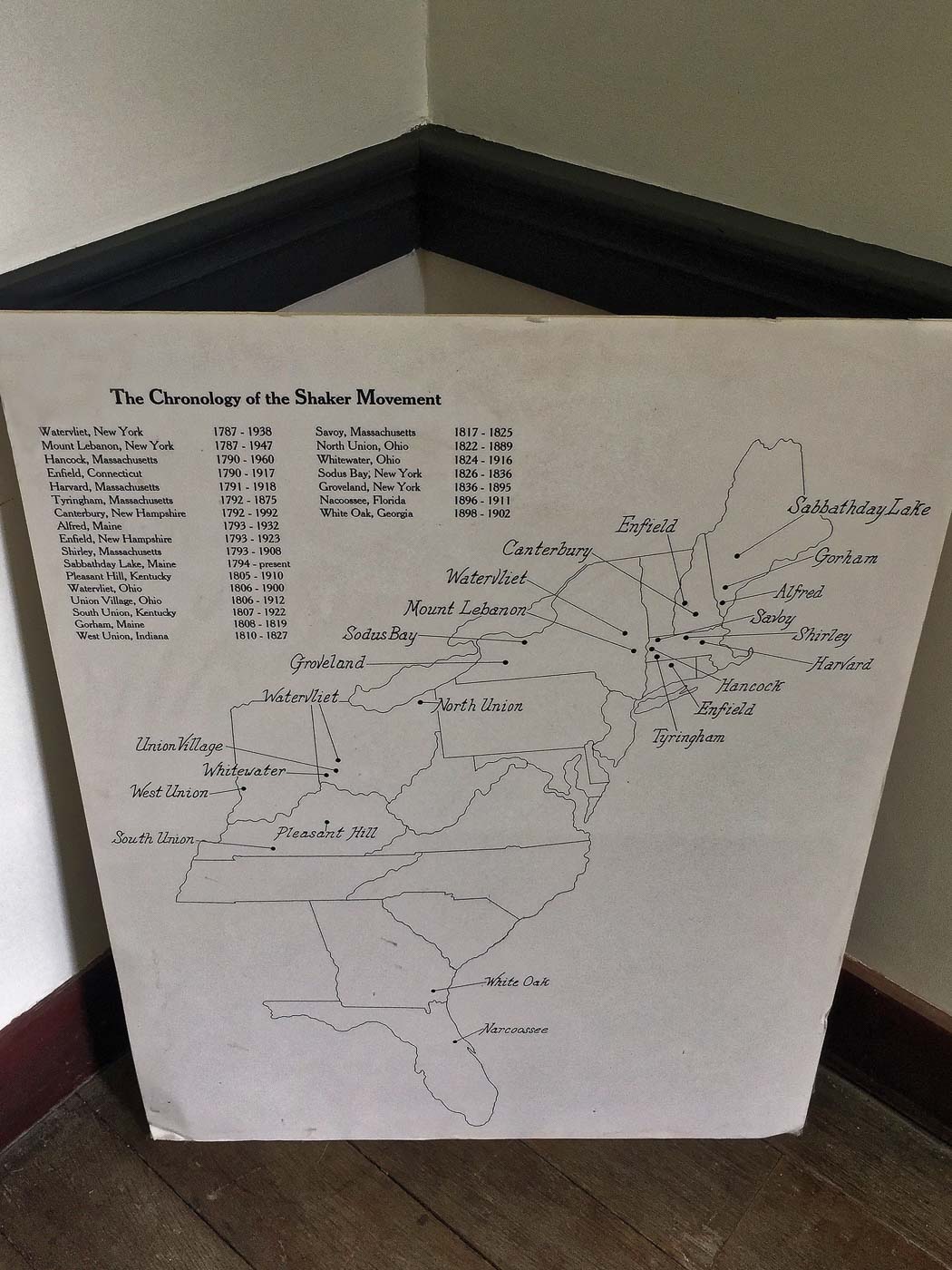
Chronology of the Shaker Movement
Watervliet, New York 1787 – 1938
Mount Lebanon, New York 1787 – 1947
Hancock, Massachusetts 1790 – 1960
Enfield, Connecticut 1790 – 1917
Harvard, Massachusetts 1791 – 1918
Tyringham, Massachusetts 1792 – 1875
Canterbury, New Hampshire 1792 – 1992
Alfred, Maine 1793 – 1932
Enfield, New Hampshire 1793 – 1923
Shirley, Massachusetts 1793 – 1908
Sabbathday Lake, Maine 1794 – present
Pleasant Hill, Kentucky 1805 – 1910
Watervliet, Ohio 1806 – 1900
Union Village, Ohio 1806 – 1912
South Union, Kentucky 1807 – 1922
Gorham, Maine 1808 – 1819
West Union, Indiana 1810 – 1827
Savoy, Massachusetts 1817 – 1825
North Union, Ohio 1822 – 1889
Whitewater, Ohio 1824 – 1916
Sodus Bay, New York 1826 – 1836
Groveland, New York 1836 – 1911
Nacoossee, Florida 1896 – 1911
White Oak, Georgia 1898 – 1902
“Although the population at Pleasant Hill peaked at almost 500 in the 1820’s, the community thrived well past the mid-19th century, acquiring more than 4,000 acres of farmland. However, after the 1860’s, changing social attitudes and the Industrial Revolution signaled the community’s decline. Kentucky Shakers no longer exist, yet their lasting influence is a legacy to all who visit this site.”
Judy Hardiman
Share this Post

